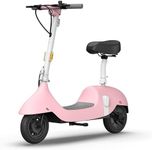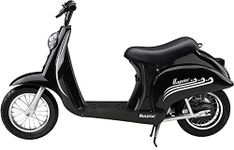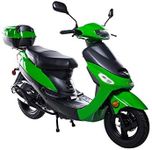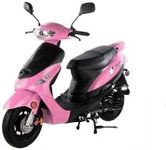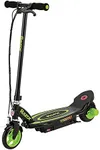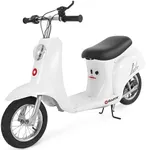Buying Guide for the Best Gas Scooters
Choosing the right gas scooter can be a fun and rewarding experience if you know what to look for. Gas scooters are a great way to get around town, offering a balance of convenience, fuel efficiency, and speed. When selecting a gas scooter, it's important to consider several key specifications to ensure you get the best fit for your needs. Here are the main specs to focus on and how to navigate them.Engine Size (cc)The engine size, measured in cubic centimeters (cc), determines the power and speed of the scooter. Smaller engines (50cc) are great for short trips and city commuting, offering better fuel efficiency and easier handling. Mid-sized engines (125cc to 150cc) provide a balance of power and efficiency, suitable for longer commutes and occasional highway use. Larger engines (200cc and above) offer more power and speed, ideal for long-distance travel and carrying heavier loads. Choose an engine size based on your typical riding needs and the distances you plan to cover.
Fuel EfficiencyFuel efficiency indicates how far the scooter can travel on a gallon of gas. This is important for saving money on fuel and reducing environmental impact. Scooters with smaller engines generally offer better fuel efficiency, often exceeding 100 miles per gallon (mpg). Mid-sized engines may provide around 70-90 mpg, while larger engines might offer 50-70 mpg. Consider your daily travel distance and how often you want to refuel when evaluating fuel efficiency.
Top SpeedTop speed is the maximum speed the scooter can achieve. This is crucial for safety and practicality, especially if you plan to ride on highways or busy roads. Smaller scooters (50cc) typically have top speeds of 30-40 mph, suitable for city streets. Mid-sized scooters (125cc to 150cc) can reach 50-60 mph, making them versatile for both city and suburban areas. Larger scooters (200cc and above) can exceed 70 mph, ideal for highway travel. Choose a top speed that matches the type of roads you'll be riding on most frequently.
Weight CapacityWeight capacity refers to the maximum load the scooter can safely carry, including the rider and any cargo. This is important for ensuring a safe and comfortable ride. Most scooters can handle at least 220 pounds, but larger models may support up to 350 pounds or more. Consider your own weight and any additional items you plan to carry regularly when assessing weight capacity.
Storage SpaceStorage space is the amount of room available for carrying personal items, such as groceries, bags, or helmets. This can be a key factor for convenience, especially if you use the scooter for errands. Scooters often come with under-seat storage, glove compartments, and sometimes additional storage options like rear trunks. Evaluate how much storage you need based on your daily activities and choose a scooter that offers sufficient space.
Braking SystemThe braking system is crucial for safety, affecting how quickly and effectively you can stop the scooter. Common types include drum brakes, disc brakes, and combined braking systems (CBS). Drum brakes are typically found on smaller scooters and are adequate for low-speed riding. Disc brakes offer better stopping power and are more common on mid-sized and larger scooters. CBS distributes braking force between the front and rear brakes for more balanced stopping. Consider the type of riding you'll be doing and choose a braking system that provides the safety and performance you need.
SuspensionSuspension affects the comfort and handling of the scooter, especially on rough or uneven roads. Basic scooters may have a simple front fork suspension, while more advanced models feature both front and rear suspension systems. Better suspension provides a smoother ride and improved control, which is important for longer trips or rough terrain. Think about the road conditions you'll encounter and choose a scooter with a suspension system that offers the comfort and stability you need.




